Optical Illusions: “Optical illusions are considered as malfunction of the visual system. This phenomenon is also viewed as bringing out particular good adaptations of visual system to particularly standard viewing situations. These adaptations are considered to be hard-wired in brain’s system. Consequently, inappropriate interpretations of visuals scene are causes. Teuber (1960) defined it as illusions of the sens¬es tell us the truth about perception. Further, an optical illusion which is also called a visual illusion is characterized by visually perceived images. These images differ from objective reality. In optical illusions, the information gathered by the eye is processed in the brain to give a percept. This perception does not tally with a physical measurement of the stimulus source.” (Hassan)
Be careful! Some illusions can cause tearing, headache and disorientation in space.
Types of Optical Illusions
There are basically three types of optical illusions literal, physiological and cognitive.
1. Literal Illusions
Literal optical illusion are images that differ from the objects that create them. Artists may use objects such as fruit or foliage to create a portraiture or scenery
Here are some Literal Illusion Examples
Charles Allan Gilbert: All is Vanity
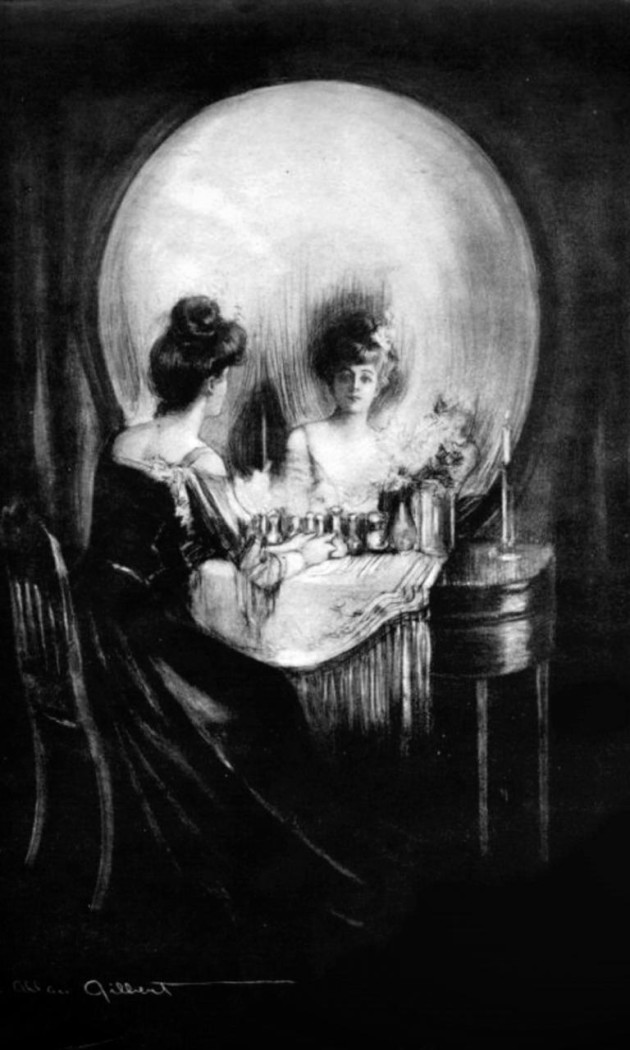
Giuseppe Arcimboldo: Earth
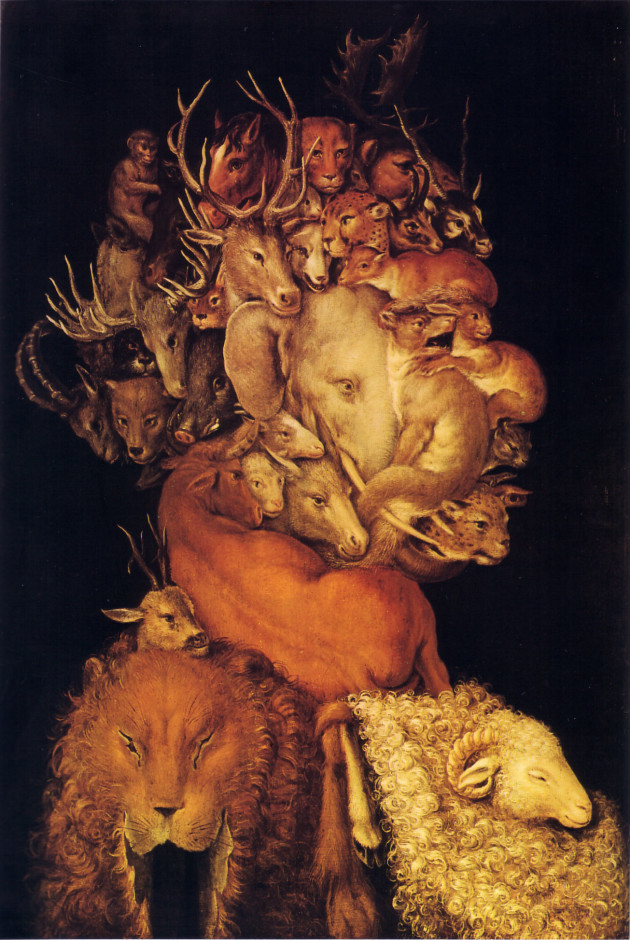
Giuseppe Arcimboldo: Vertumnus
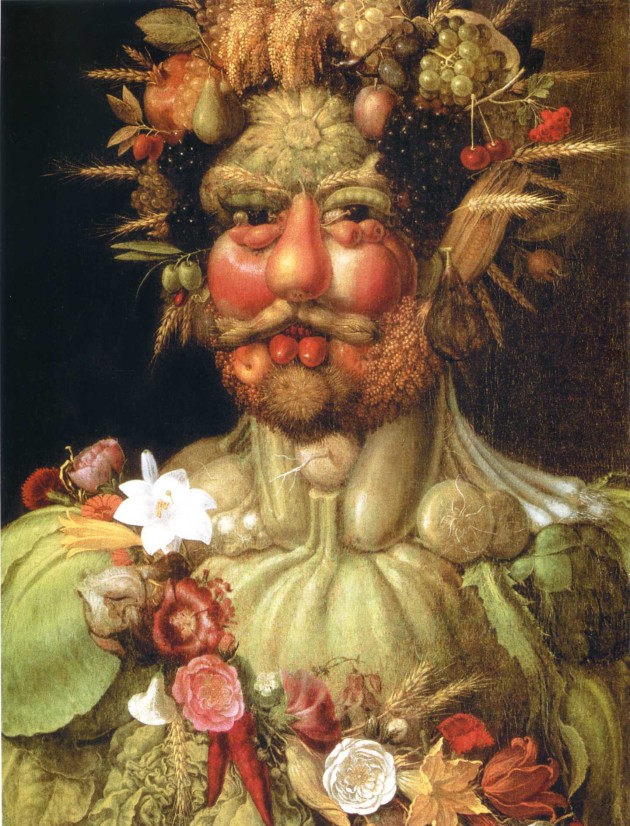
Absent of a Mermaid
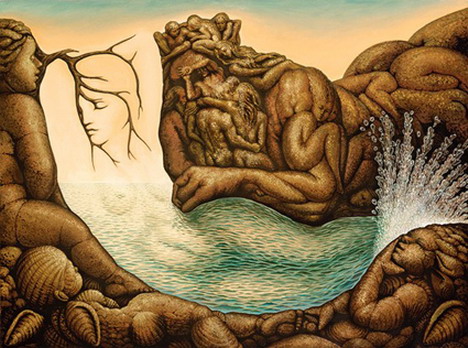
Old Couple, Young Couple
Do you see two oldies looking at each other or are you staring at a young man playing guitar and a young lady with a vase on her head?
2. Physiological Illusions
Physiological illusions, such as the afterimages following bright lights or adapting stimuli of excessively longer alternating patterns (contingent perceptual aftereffect), are presumed to be the effects on the eyes or brain of excessive stimulation of a specific type – brightness, tilt, color, movement, etc. The theory is that stimuli have individual dedicated neural paths in the early stages of visual processing, and that repetitive stimulation of only one or a few channels causes a physiological imbalance that alters perception.
The Herman Grid Illusion is best explained using a biological approach. Lateral inhibition, where in the receptive field of the retina light and dark receptors compete with one another to become active, has been used to explain why we see bands of increased brightness at the edge of a color difference when viewing Mach bands. Once a receptor is active it inhibits adjacent receptors. This inhibition creates contrast, highlighting edges. In the Hermann grid illusion the grey spots appear at the intersection because of the inhibitory response which occurs as a result of the increased dark surround. (123OpticalIllusion)
Count The Black Dots (Herman Grid Illusion)
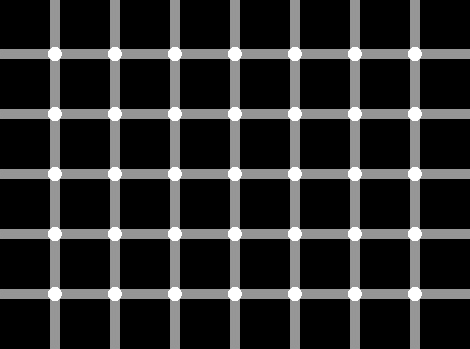
Inside Rotation
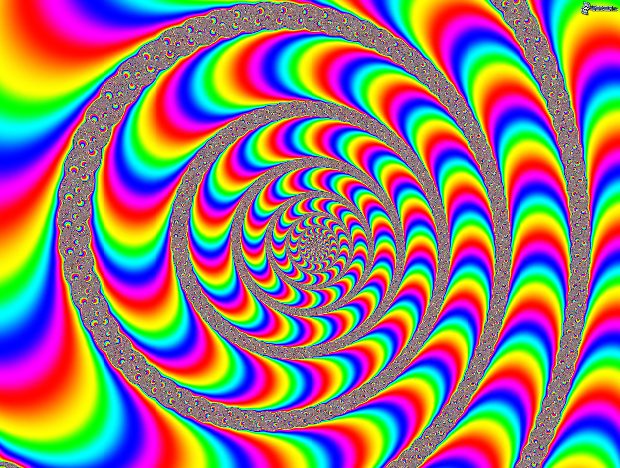
Towards You
Watch the next three images “move” . . .
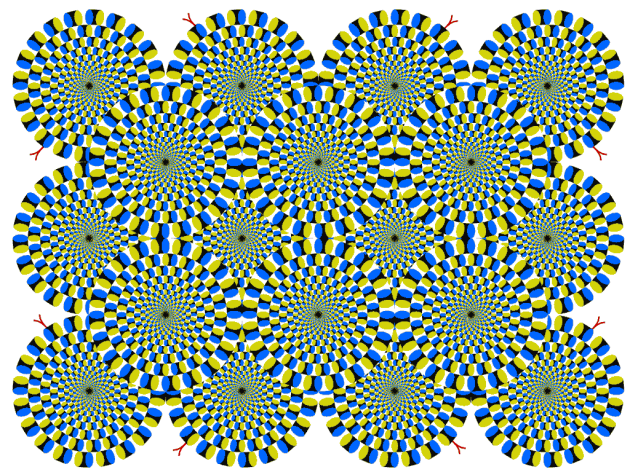
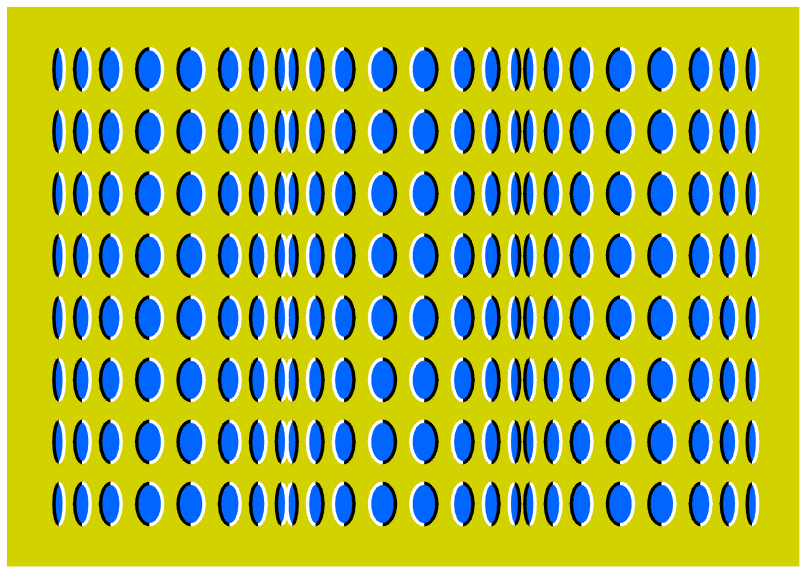
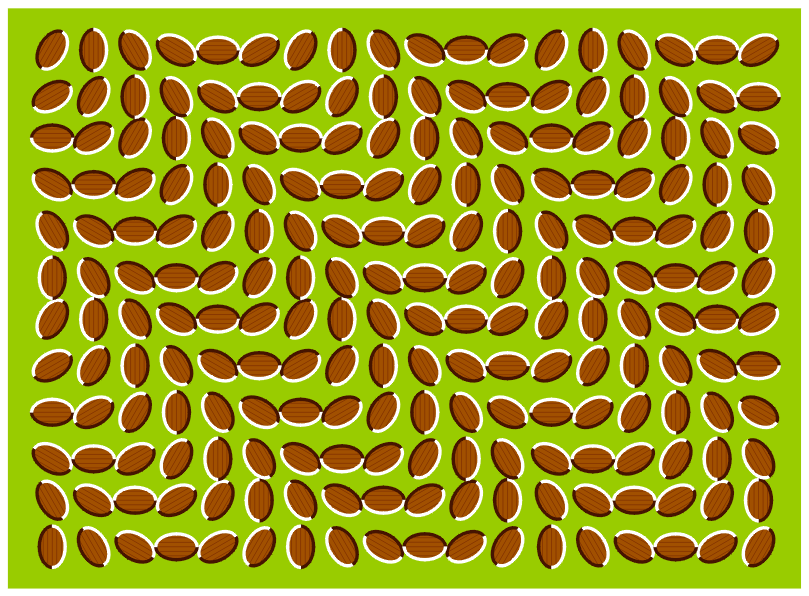
3. Cognitive
Cognitive illusions are those where the eye and brain make unconscious inferences. Cognitive illusions are assumed to arise by interaction with assumptions about the world, leading to “unconscious inferences”, an idea first suggested in the 19th century by Hermann Helmholtz. Cognitive illusions are commonly divided into ambiguous illusions, distorting illusions, paradox illusions, or fiction illusions.
Ambiguous illusions are pictures or objects that are suppose to elicit a perceptual switch between the alternative interpretations. The Necker cube is a well known example; another instance is the Rubin vase.
Necker Cube
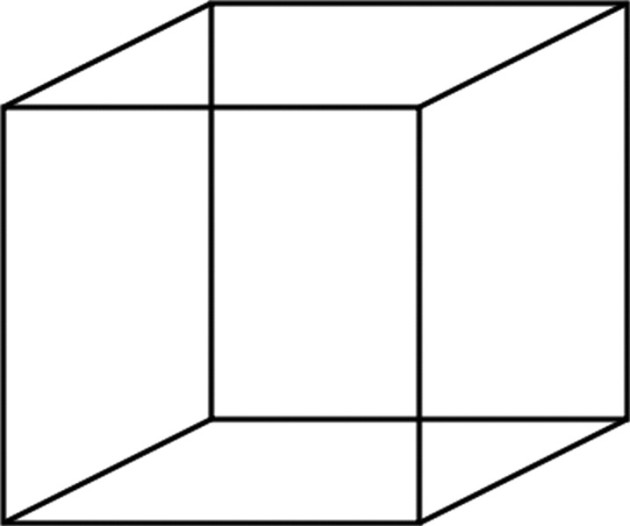
Rubin Vase
Do you see two oldies looking at each other or are you staring at a young man playing guitar and a young lady with a vase on her head?
Distorting illusions are characterized by distortions of size, length, or curvature. A striking example is the Cafe wall illusion. Another example is the famous Muller-Lyer illusion.
The illusion of “The Wall Cafe”
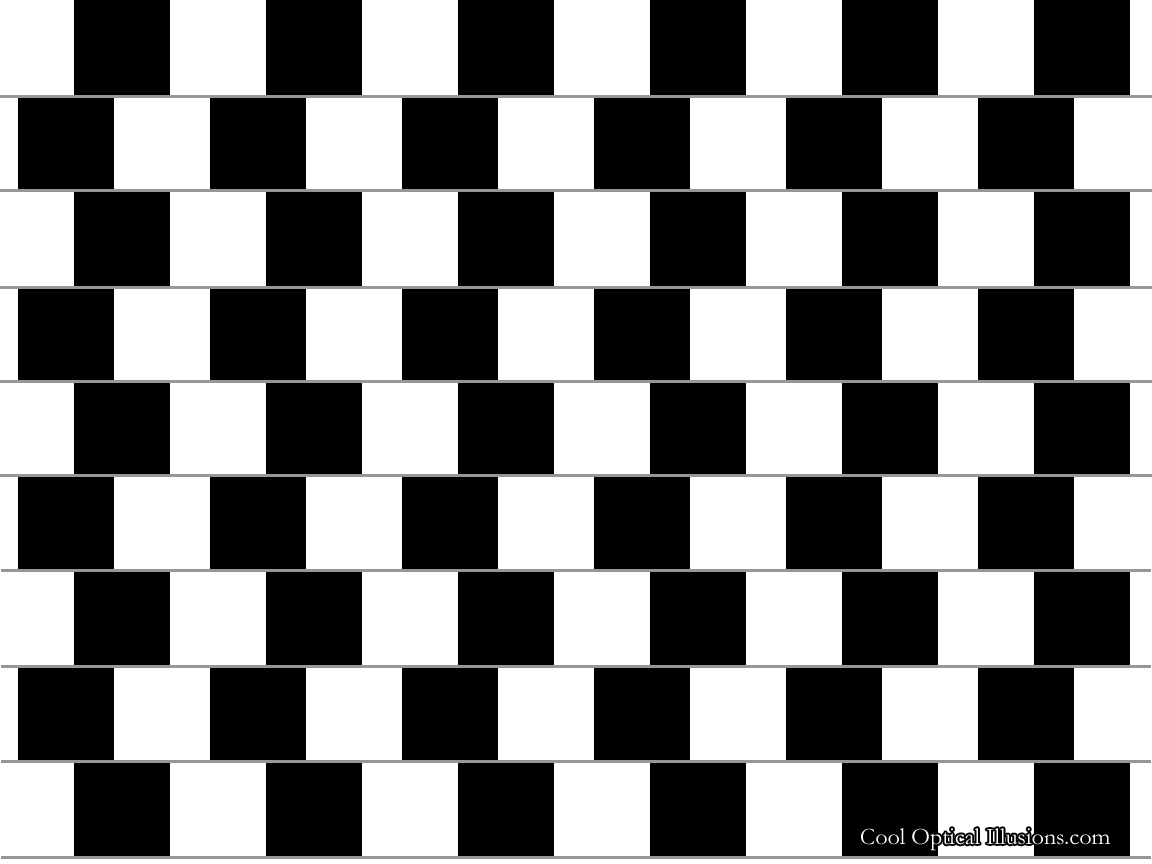
Müller-Lyer illusion
Which line is longer?
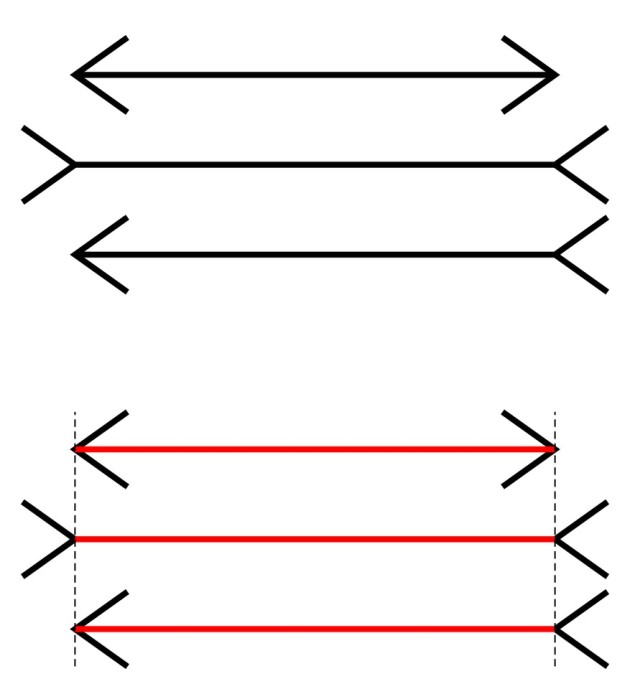
Paradox illusions are generated by objects that are paradoxical or impossible, such as the Penrose triangle or impossible staircases seen, for example, in M. C. Escher’s Ascending and Descending and Waterfall. The triangle is an illusion dependent on a cognitive misunderstanding that adjacent edges must join.
Penrose Triangle
The Penrose triangle appears to be solid on the page, but it cannot be built.
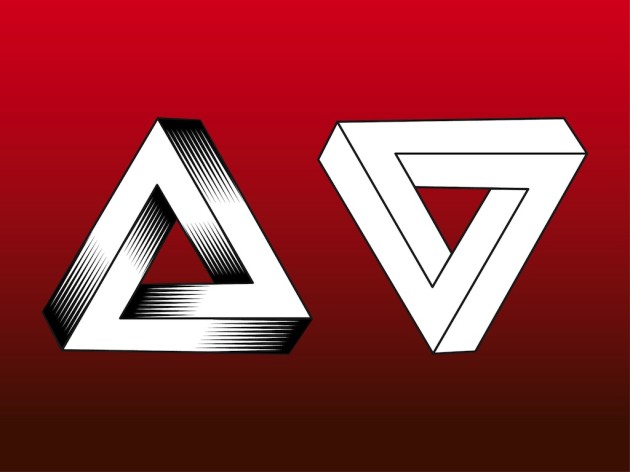
Impossible Staircases
Follow the staircase around. Can you determine the lowest or highest step? What happens when you go around in a clockwise direction? What happens when you go around in a counter-clockwise direction?
M. C. Escher’s Ascending and Descending
“A rectangular inner courtyard is bounded by a building that is roofed in by a never-ending stairway. The inhabitants of these living-quarters have the ritual duty to climb those stairs for a few hours each day. It would seem that when they get tired they are allowed to turn about and go downstairs instead of up. Yet both directions, thought not without meaning, are equally useless.”
Impossible Trident
What is wrong with the figure that Alfred E. Newman is balancing on his finger? How many prongs can you count? Where exactly is that middle prong located?
– Fictional illusions are defined as the perception of objects that are genuinely not there to all but a single observer, such as those induced by schizophrenia or a hallucinogen. These are more properly called hallucinations.
Waterfalls Illusion
The picture suggests a paradox where water from the base appears to move uphill before falling down the waterfall. How? Figure it out 🙂 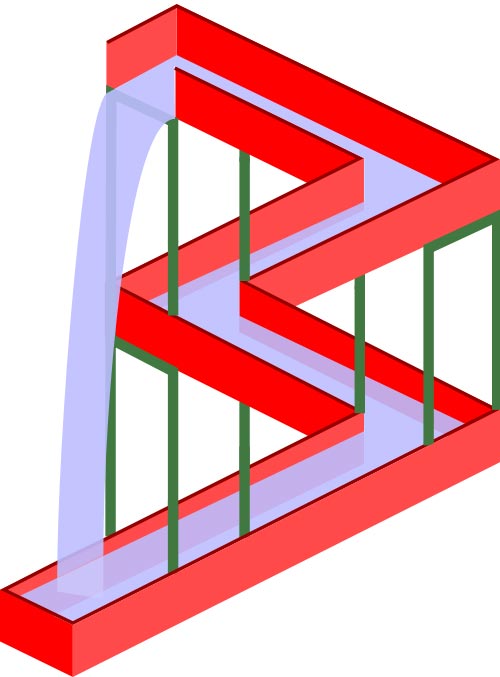 Be careful! Some illusions can cause tearing, headache and disorientation in space.
Be careful! Some illusions can cause tearing, headache and disorientation in space.
Black and white illusion
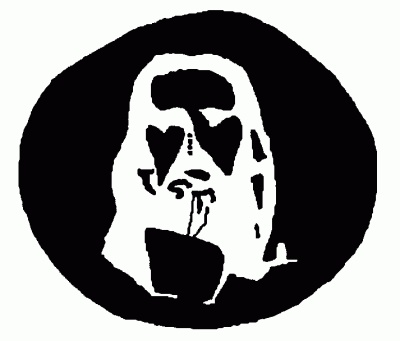
Stare at the three vertical dots in the center of this image for about 30 seconds and then look at a white wall or a white bit of paper or you can even just sit back and close your eyes. What do you see? Don’t be freaked out now!
The endless chocolate
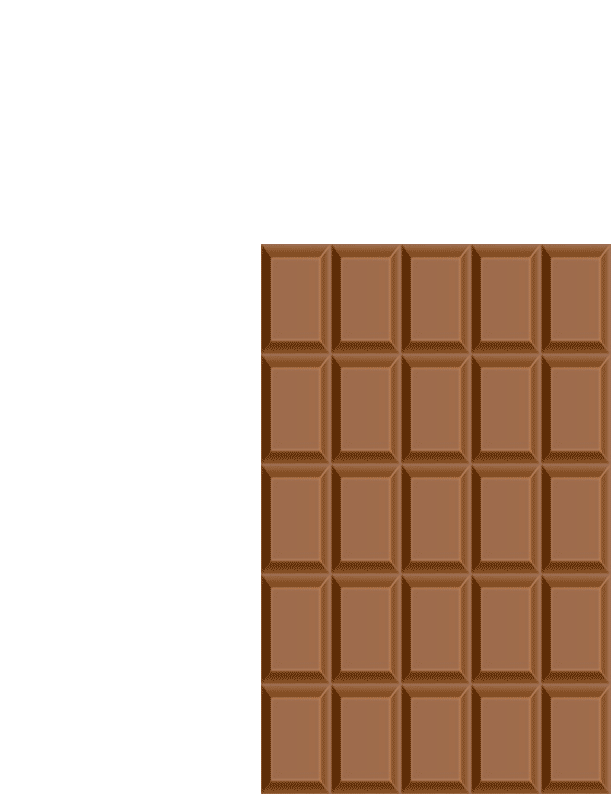
If you cut a chocolate bar 5 on 5 and rearrange all the pieces in the order shown, then, out of nowhere, there will be an extra piece of chocolate. The same can be done with the usual chocolate and make sure it is not computer graphics, and is an existing puzzle!!
Ship or an arch?
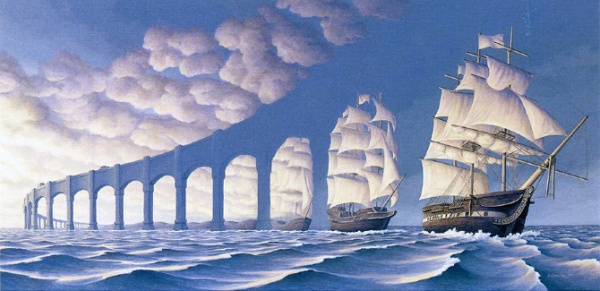
This illusion – a work of art. The picture painted by Rob Gonsalves – Canadian artist, representative of the genre of magical realism. Depending on where you look, you can see the long bridge or arch or sail the ship.
Vanishing Circles
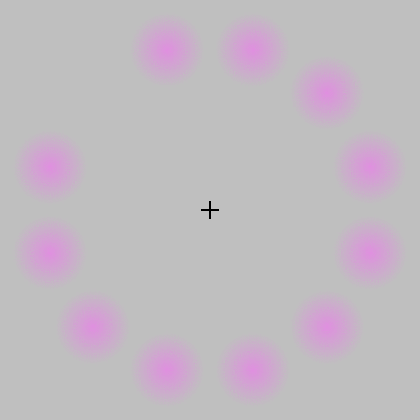
This illusion is called “Disappearing circles.” It consists of 12 arranged in a circle lilac pink and black spots in the middle of a cross. Each spot disappears in a circle of about 0.1 seconds, and if you focus on the central cross-stitch, you can get the following effect:
1) at first seem that runs around the green spot
2) then purple spots begin to fade
The illusion of the Tower of Pisa
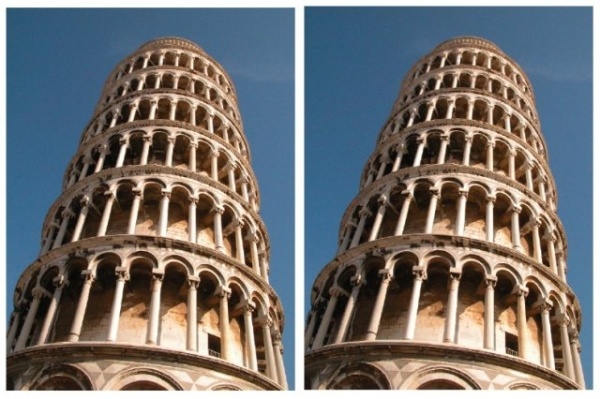
Above you see two images of the Leaning Tower. At first glance, it appears that the tower on the right leans more than the tower on the left, but in reality, these two pictures are the same. The reason lies in the fact that the visual system treats the two images as part of a single scene. Therefore, we believe that both pictures are not symmetrical.
Illusion bars
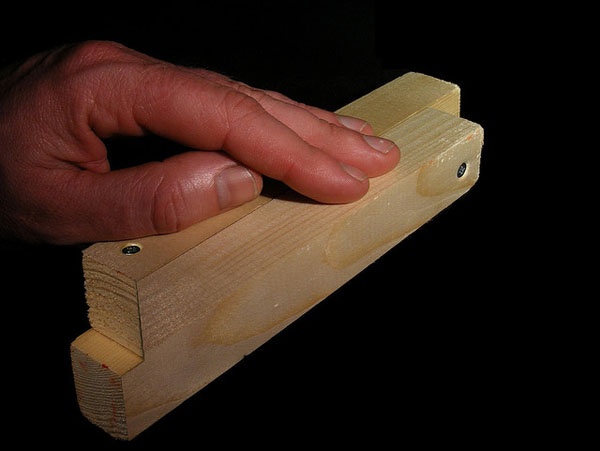
Take a look at these bars. Depending on how you are looking, two pieces of wood or will be near, or one of them will be on the other.
Cube and two identical cups
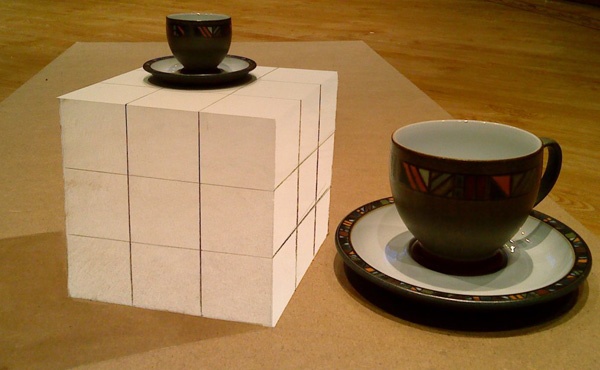
The optical illusion created by Chris Westall. On the table is a cup, next to which is a cube with a small cup.However, on closer inspection, we can see that both are same cup with the same size. A similar effect is seen only at a certain angle.
Couple in love
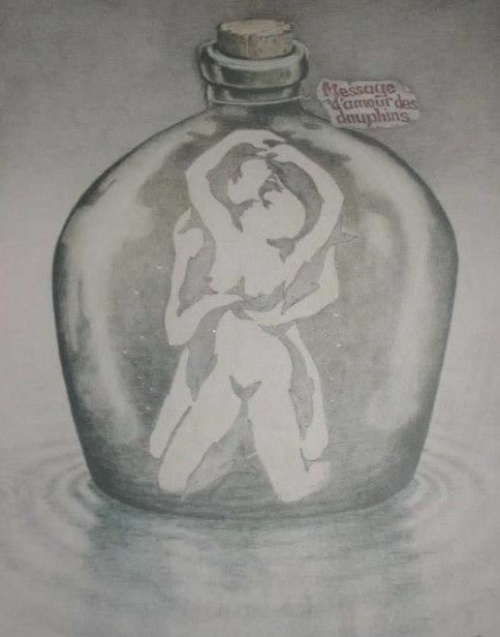
If you show this picture to children, they will see dolphins playing. But adults see something different. This occurs because the memory of children don’t have exposure to “adulthood”. The painting, which was written by Sandro Del Prete, and is called “Message of Love from the Dolphins.”
Ship or an arch?

This illusion – a work of art. The picture painted by Rob Gloves – Canadian artist, representative of the genre of magical realism. Depending on where you look, you can see the long bridge or arch or sail the ship.
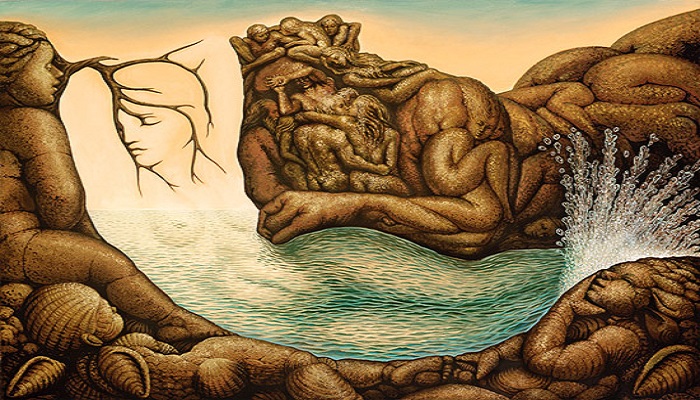

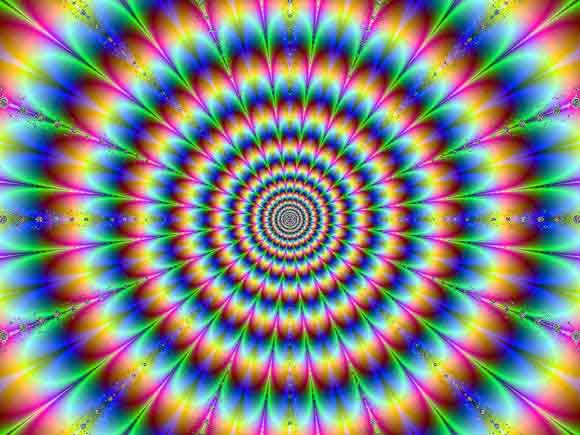
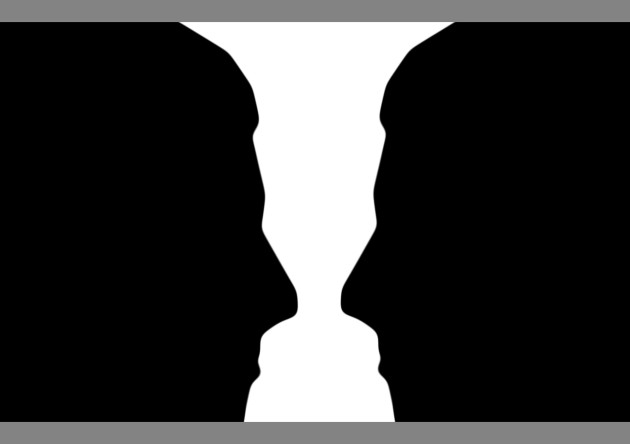
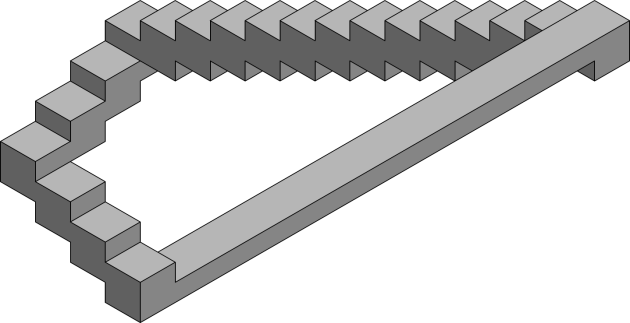
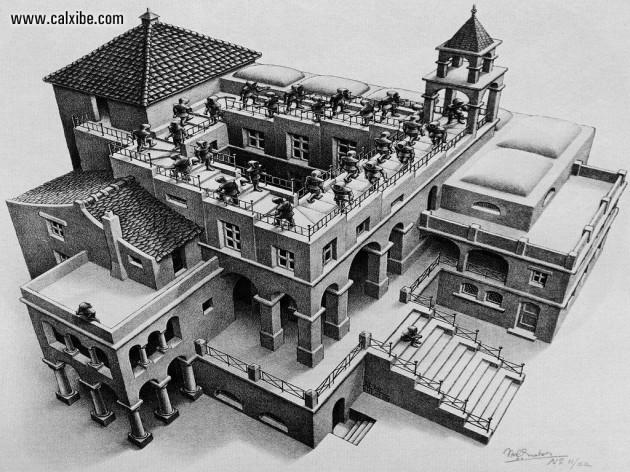
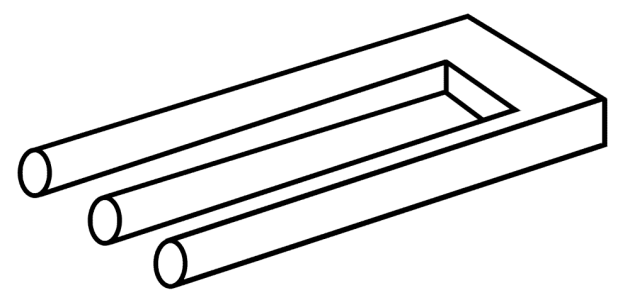
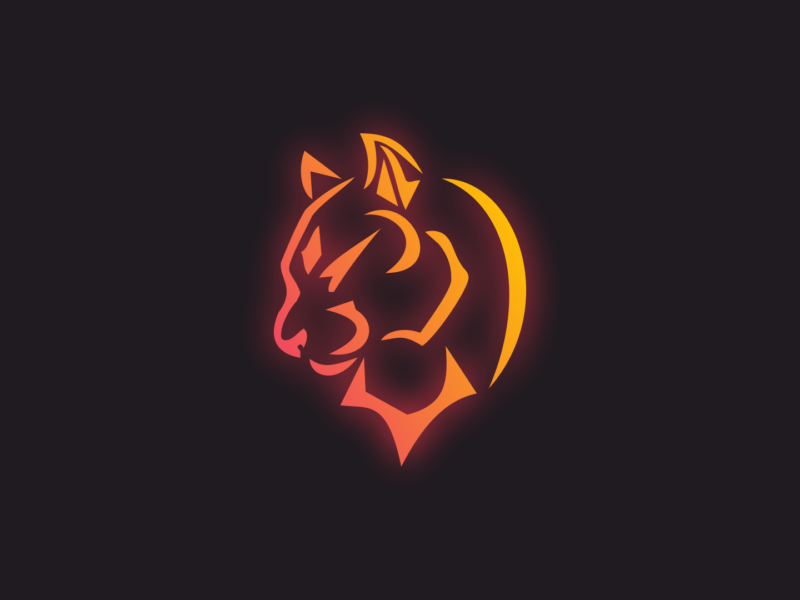
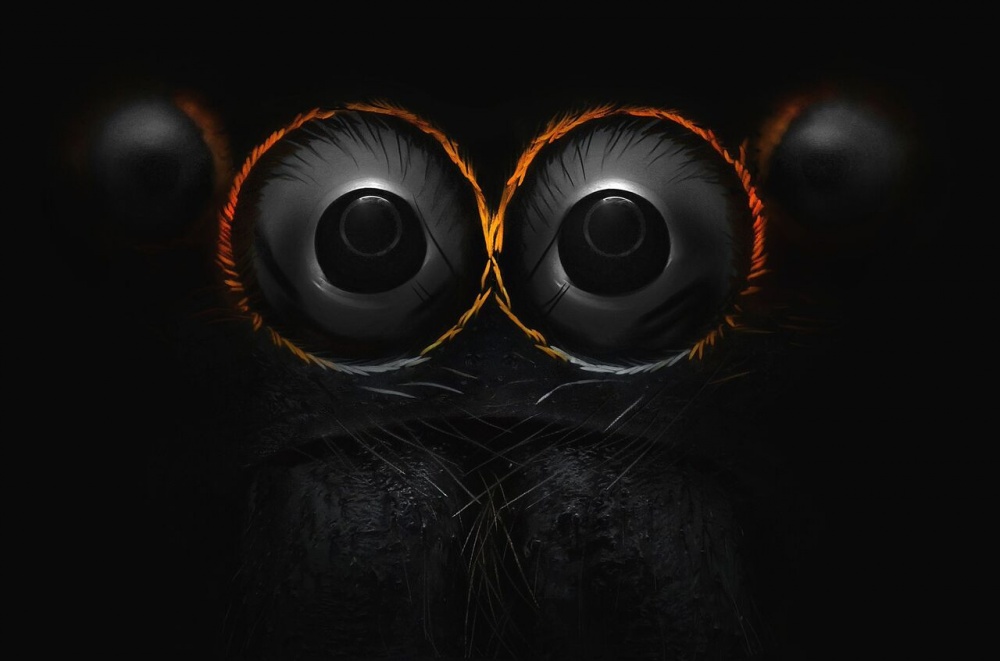
amazing..
Speechless!!!
Speechless!!!
amazing..